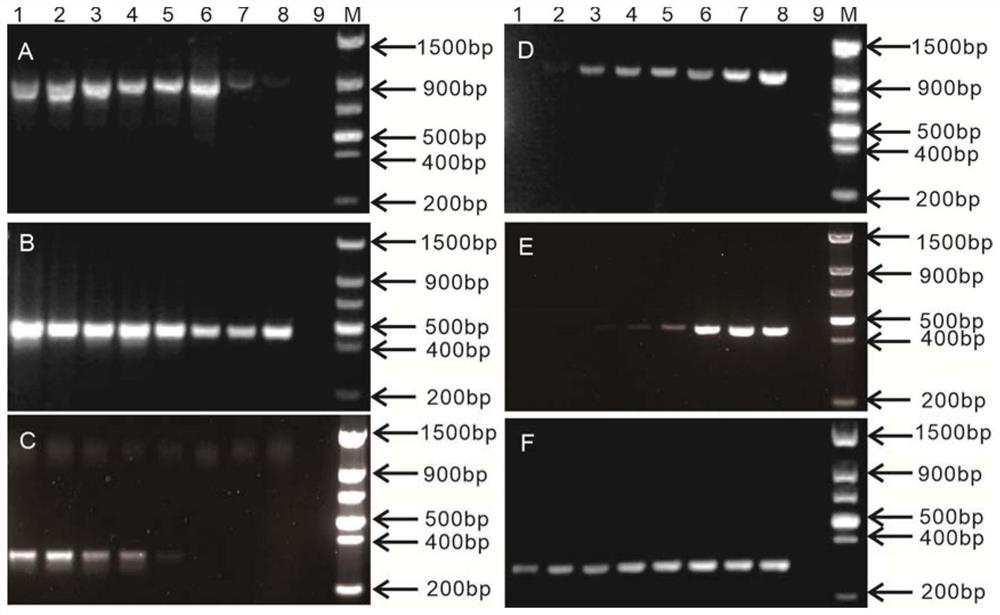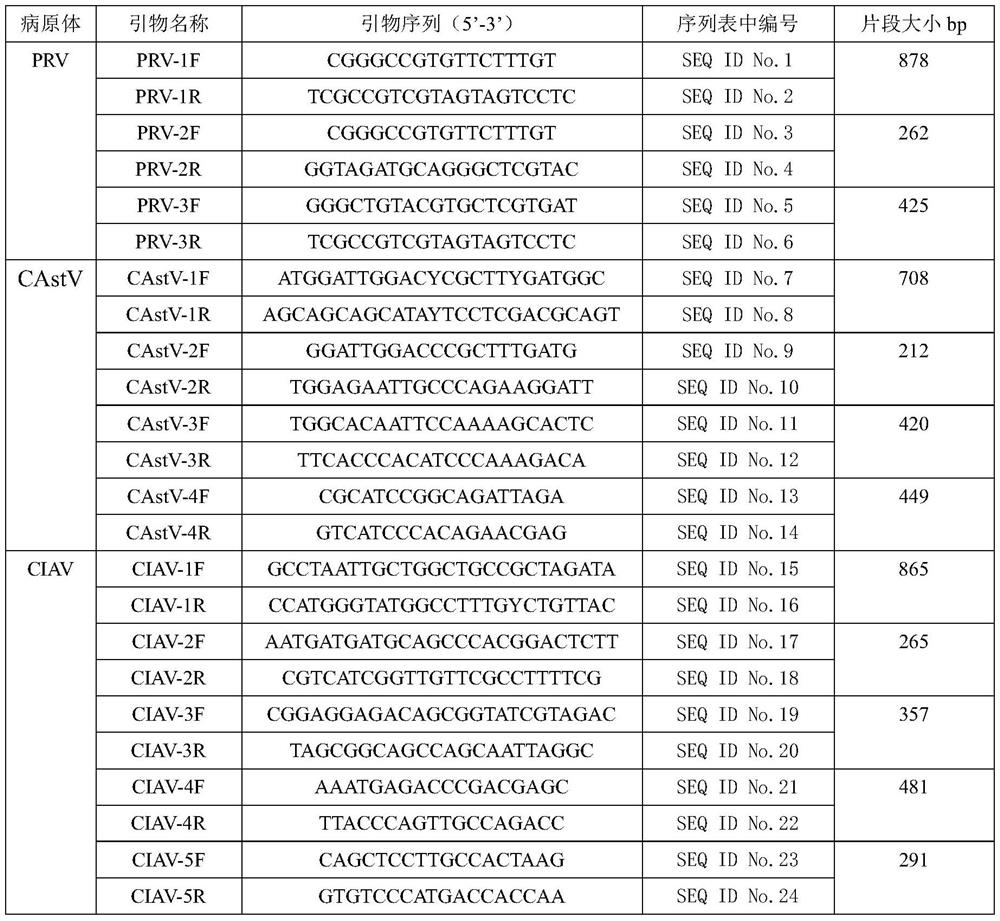Method for detecting pseudorabies virus
A technique for pseudorabies virus and detection method, which is applied in the field of molecular biology and can solve the problems of strict annealing temperature, inability to identify PRV, and long time consumption.
- Summary
- Abstract
- Description
- Claims
- Application Information
AI Technical Summary
Problems solved by technology
Method used
Image
Examples
Embodiment 1
[0021] The materials and reagents used in the following examples can be obtained from commercial sources unless otherwise specified. Embodiment 1, screening and optimization of PRV detection method
[0022] 1 Materials and methods
[0023] 1.1 Virus strains and sources of positive cDNA
[0024] Chicken infectious anemia virus GXC060821 strain, porcine pseudorabies virus PRV and chicken astrovirus type 1 positive cDNA (derived from clinical samples) were preserved by Guangxi Veterinary Research Institute; CIAV and PRV were extracted according to the instructions in EasyPure Viral DNA / RNA Kit Viral DNA; DNA and Chicken Astrovirus Type 1 positive cDNA template were stored at -20°C for future use.
[0025] 1.2 Main reagents and instruments
[0026] The general amplification nano-PCR kit was purchased from Shanghai Huzheng Biotechnology Co., Ltd., the PCR instrument was purchased from Bio-rad, USA; the DNA / RNA co-extraction kit EasyPure Viral DNA / RNA Kit was purchased from Beiji...
Embodiment 2
[0061] Embodiment 2, a kind of detection method of PRV
[0062] The method comprises the steps of:
[0063](1) Preparation of template DNA
[0064] The DNA of the PRV virus can be extracted according to the instructions in the EasyPure Viral DNA / RNA Kit.
[0065] (2) Nano-PCR reaction
[0066] Reaction system (20 μL): 1 μL cDNA / DNA template, 10 μL 2×Nano-QPCR buffer, 0.1 μL upstream and downstream primer mixture with a working concentration of 20 μmol / L (the final concentration of primers is 0.1 μmol / L), taq enzyme Mix ( 5U / uL) 0.32μL, add ddH 2 O to make up 20 μL.
[0067] The primer combination is PRV-1F / PRV-1R.
[0068] PCR reaction program: 95°C for 3min; 94°C for 5s, annealing temperature at 50°C for 5s, 72°C for 30s, 20 cycles; 72°C for 5min, 12°C to end the reaction.
[0069] (3) Detection of PCR products
[0070] The amplification results can be verified by 1.2% agarose gel electrophoresis.
Embodiment 3
[0071] Embodiment 3, a kind of detection method of PRV
[0072] The method comprises the steps of:
[0073] (1) Preparation of template DNA
[0074] The DNA of the PRV virus can be extracted according to the instructions in the EasyPure Viral DNA / RNA Kit.
[0075] (2) Nano-PCR reaction
[0076] Reaction system (20 μL): 1 μL cDNA / DNA template, 10 μL 2×Nano-QPCR buffer, 1 μL upstream and downstream primer mixture with a working concentration of 20 μmol / L (the final concentration of primers is 1 μmol / L), taq enzyme Mix (5 U / L uL)0.32μL, add ddH 2 O to make up 20 μL.
[0077] The primer combination is PRV-2F / PRV-2R.
[0078] PCR reaction program: 95°C for 3min; 94°C for 5s, annealing temperature at 50°C for 5s, 72°C for 30s, 20 cycles; 72°C for 5min, 12°C to end the reaction.
[0079] (3) Detection of PCR products
[0080] The amplification results can be verified by 1.2% agarose gel electrophoresis.
PUM
 Login to View More
Login to View More Abstract
Description
Claims
Application Information
 Login to View More
Login to View More - R&D
- Intellectual Property
- Life Sciences
- Materials
- Tech Scout
- Unparalleled Data Quality
- Higher Quality Content
- 60% Fewer Hallucinations
Browse by: Latest US Patents, China's latest patents, Technical Efficacy Thesaurus, Application Domain, Technology Topic, Popular Technical Reports.
© 2025 PatSnap. All rights reserved.Legal|Privacy policy|Modern Slavery Act Transparency Statement|Sitemap|About US| Contact US: help@patsnap.com



